For this project I started by modeling papyrus, then the red apple ground cover, and finally a sprig of lille turf. For each system I began making a symmetrical version of the system and then slowly adding random variations to add interest and accuracy. Each system uses it’s own set of rules and axioms but many parts of the code overlap between drawings and are used my all of the bellow systems. The creative spark that the papyrus plant initiated prompted the inspiration for the temporary tattoo. The first two L-systems that were not fabricated are described first followed by description of the fabricated system and the fabrication method.
The Girls

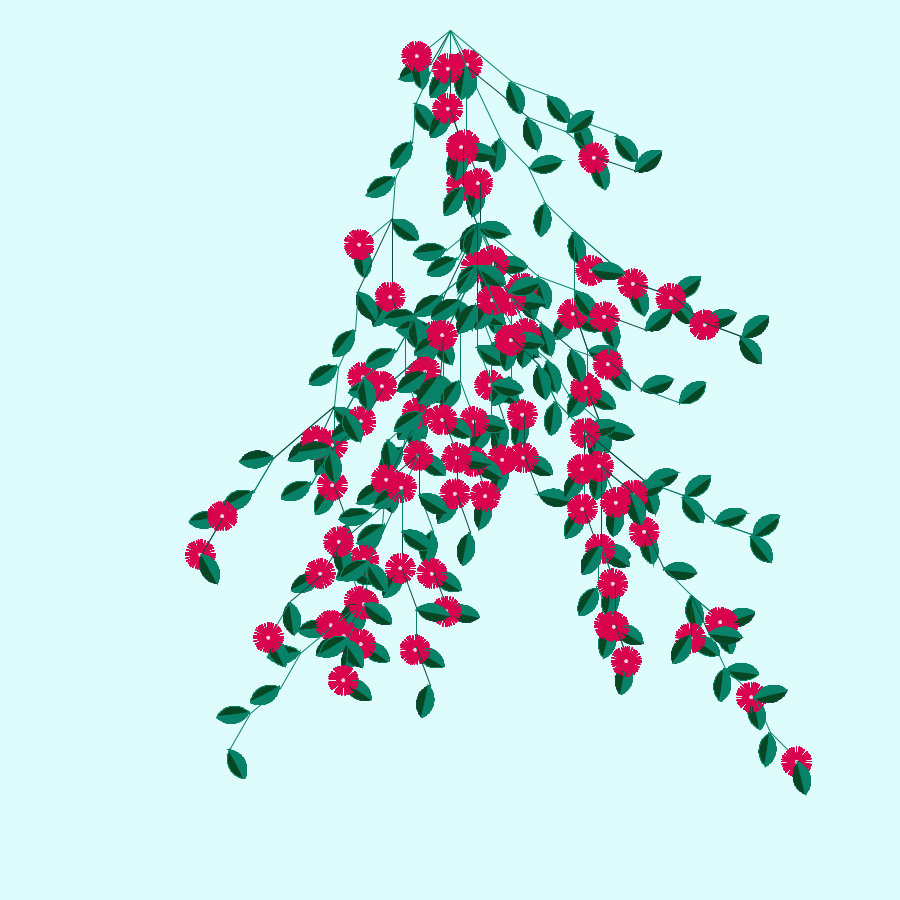
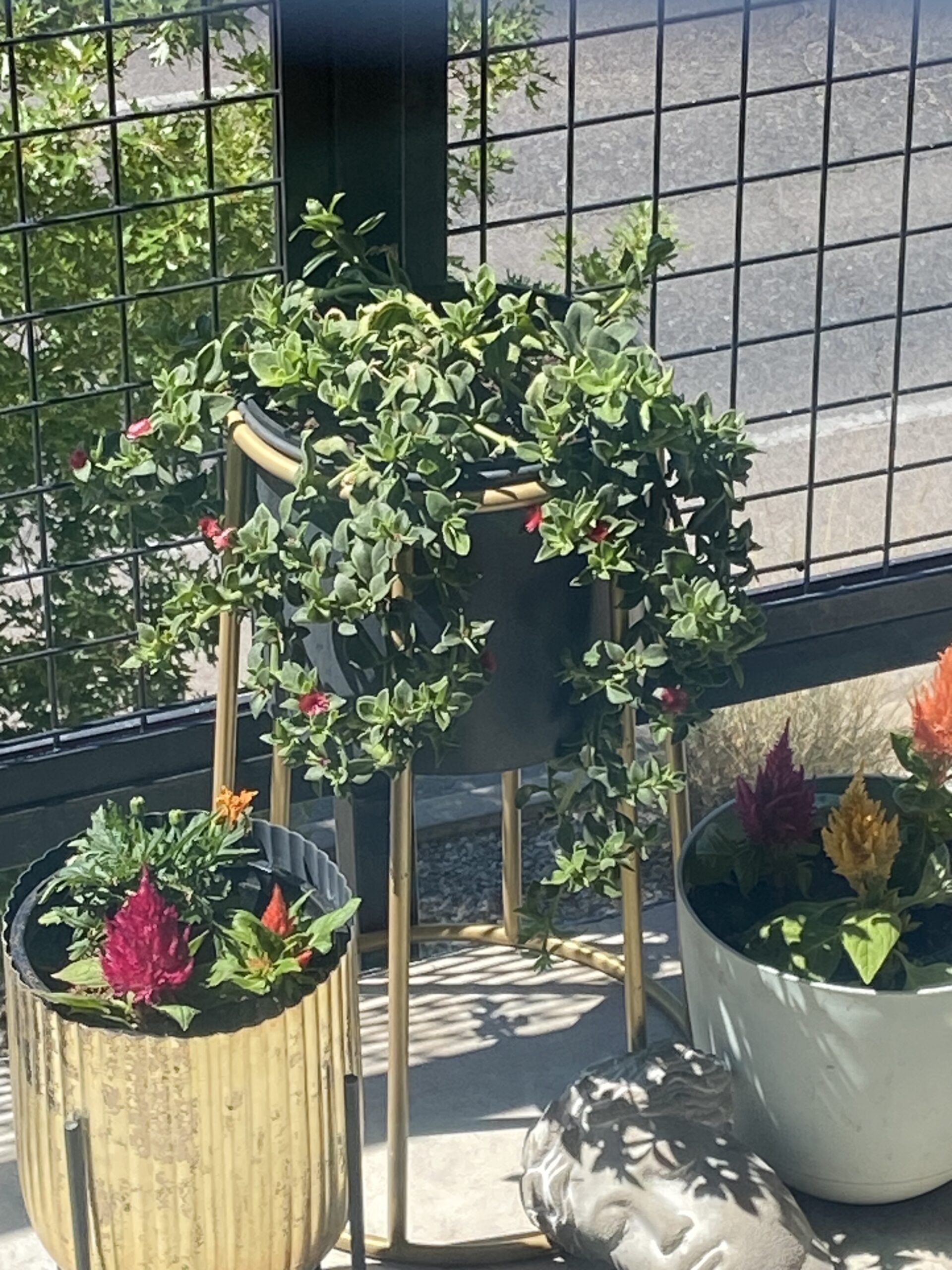
This plant is a Aptenia ‘Red Apple’ (Baby Sun Rose); it is a succulent ground cover. The picture on the right is from my balcony featuring one of my favorite plants I have owned. The plant’s blossoms open and close with the sun and I look forward to checking on them each morning. My fondness for this plant made it a natural choice for a L-System drawing.

I began this L-system by making a snaking vine. From there I added more branches and leaves. The system looked light so I decreased the angle in the iteration method so that the branches would look more like it is hanging. Following the described strategy above I first made my system symmetrical. For this system I introduced random elements primarily through the variations in branch structure. Bellow is the grammar I used for this L-System, both ‘X’ and ‘T’ abstracted the systems two major branching options. Capturing the density of this plant was the most significant challenge within the confines of the grammar I wrote. I solved this by adding two extra turtles to allow for multiple branches to intersect. Playing with line weight is another area where I could improve the density problem within my system. The drawing starts with a size of 40 and an angle of 40 degrees for all three turtles. The axiom for each turtle is essentially ‘X’ however the flowing two turtles need to begin drawing with a different heading, so I added two more axioms that just turn the turtle slightly before adding the first ‘X’ to the l-system word.
Axioms: X, <<X, >>X
String [][] rules = {
{"F", "FW"},
{"T", "FFW>>XFW<<XFWX>>FWX<<", "FWX"},
{"X", "[+XT][-XT]T[+XT][-XT]T[+XT][-XT][+XT][-XT]", "[-XT][+XT]T[-XT][+XT]T[-XT][+XT][-XT][+XT]"},
{"+", "+"},
{"-", "-"},
{"[", "["},
{"<", "<"},
{">", ">"},
{"L", "L"},
{"]", "]"}};Lavender?
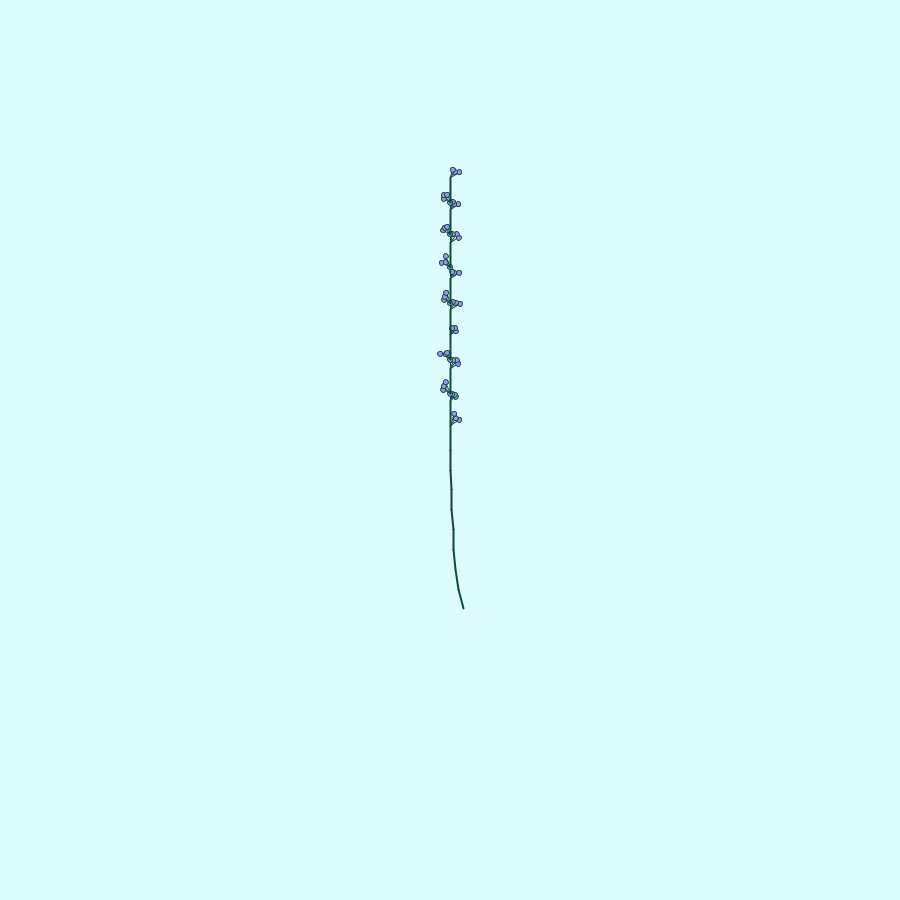

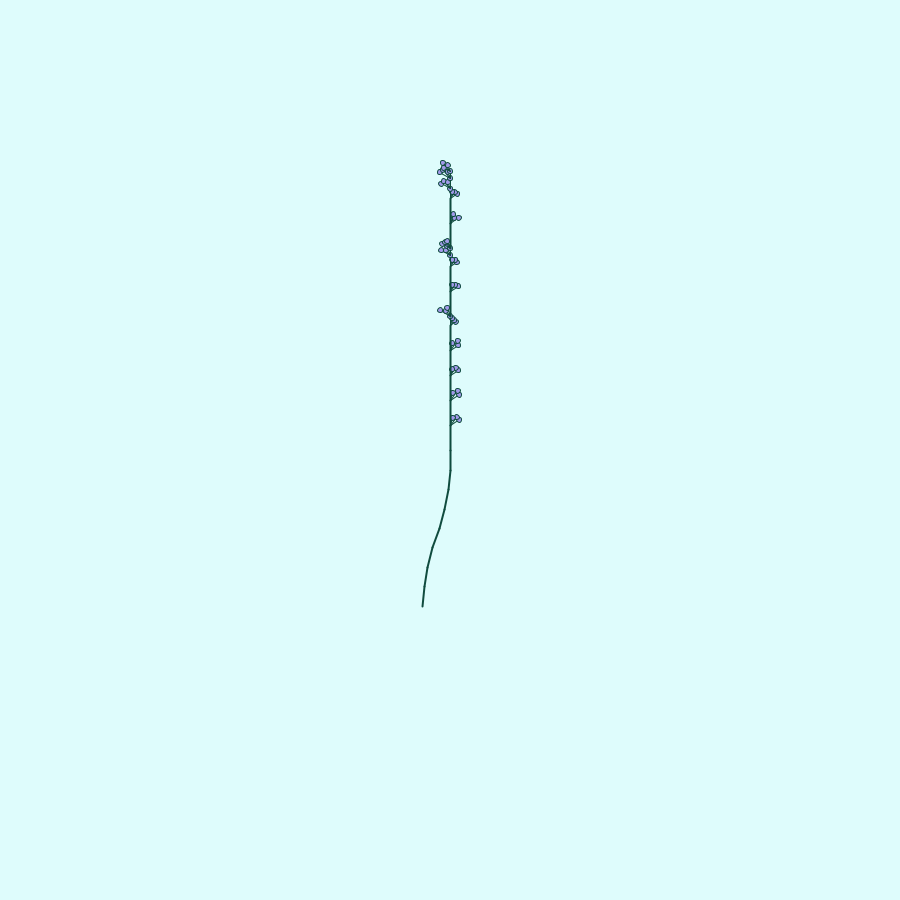
This plant has been growing in the courtyard of an apartment building and its dainty sprigs immediately caught my eye . This is the last L-System I attempted and after coming up with another grammar that featured a plume like structure I wanted to try another form. This plant is Lilly Turf(pictured bellow) and in the future I plan to merge some of my other grammars to achieve the entire plant.

Upon writing this system I discovered most branches needed to dead end, meaning nothing will be added to figure from that portion of the word. After figuring out how to dead end my branches this system was straight forward to write. Randomness was introduced by small angel changes and step size variations through out the structure. This system also relies of conditionals for iterations; only looping 6 times. One turtle started this drawing with an angel of 20 degrees and a size of 50.
Axiom [S]X
String [][] rules = {{"F", "F"},
{"X", "F[+++d][++d][+d]X", "d[---d][--d][-d]X"},
{"+", "+"},
{"-", "-"},
{"*", "*"},
{"/", "/"},
{"[", "["},
{"]", "]"},
{"S", "S"},
{"d", "d"},
};Papyrus
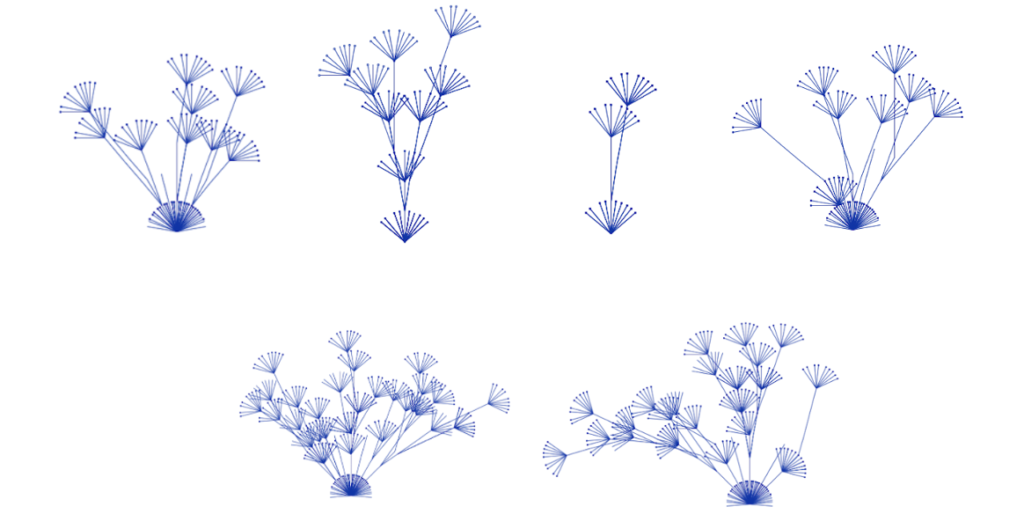
When first learning about L-Systems I was most intrigued by the face that plants needed asymmetry to look natural. I immediately thought of paintings I had seen of papyrus with beautifully symmetric and geometric depictions(see images bellow)



I had never seen or thought to look up what the natural reed looked like. For my L-system I wanted to balance both the aesthetics of the physical plant while maintaining a more stylized and geometric appearance which felt more in line with the art I associated with the plant. I was also excited by how visually prominent papyrus fractal shape is, each plume its own fan shape that creates a much the larger plume. Creating this fan shape is where I began writing my L-system. While the fan shape was easy to draw getting the shape to replicate into a growing fan proved to be my larges obstacle. For this L system I had to write out the shape to really wrap my head around the overall shape.


The system I created ended up very chaotic without the fan shape eventually stopping. I instead opted for the second set of fans to terminate in a circle. I still at times had a somewhat chaotic system but many drawings came out very close to my initial vision. In the future if I change this L-system again I hope to add plumes in different stages of their life cycle instead of the one shape seen in my drawings. Bellow is a picture of a more chaotic drawing but highlights the fractal fan shape. This system started for some drawings with one turtle with an angle of 10 and a size of 40. Other drawing had three turtles with the same inputs other than small axiom changes that only impacted the turtle’s initially heading.
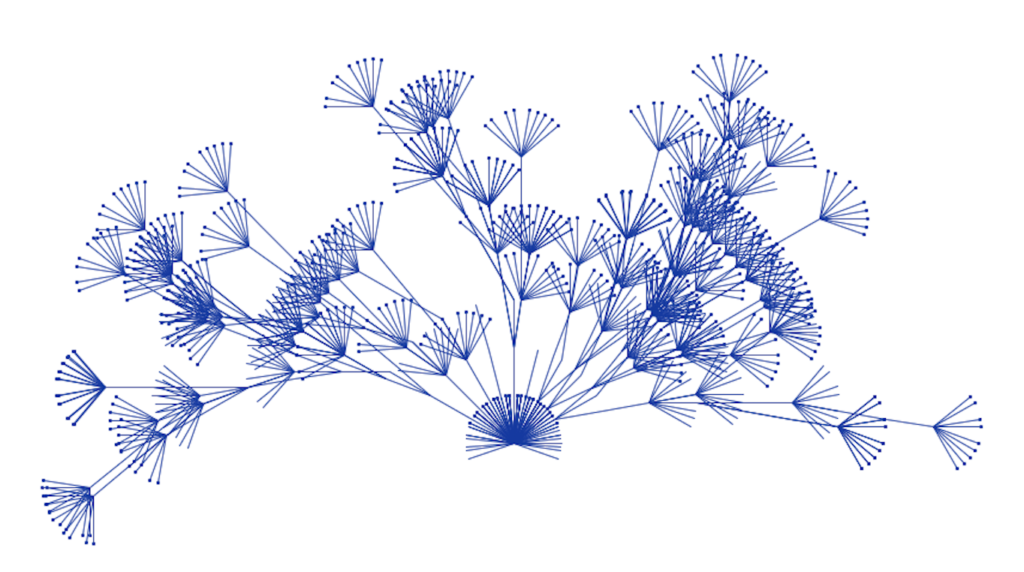
Axiom = [YZX], <<[YZX], >>[YZX]
String [][]Papyrusrules =
{{"F", "F"},
{"X", "F[-XYZ][+XYZ]F[-XYZ]", "F[++XYZ][-XYZ]F[--XYZ]", "FF[-XYZ][+XYZ]F[---XYZ]", "F[+XYZ][+XYZ]FF[+XYZ]" },
{"Y", "[+++++FW][++++FW][+++FW][++FW][+FW]", "[+++F][++F][+FW]", "[+++++FW][+++FW][++FW][+FW]",
"[++++++FW][+++FW][++FW][F++FW][+FW]"},
{"Z", "[-----FW][----FW][--FW][-FW]", "[-------FW][--FW][--FW][FW]", "[------FW][-----FW][---FW][--FW][-FW]",
"[-----FW][--FW]"},
{"+", "+"},
{"-", "-"},
{"[", "["},
{"]", "]"},
{"<", "<"},
{">", ">"},
};Fabrication Processes
I initially wanted to make a jewelry piece that was enhanced by a temporary tattoo but as I begin noticing how many L-systems were all around me, most notably the veins on my wrist, I decided to only the make tattoo. In a costume history class I remember learning about Ancient Egyptian women painting veins on their chest as a part of their make up ritual. It should be noted that I could not find a credible source to support this fact. The plant and this fact inspired the color and placement of the tattoo.
In trying to refresh myself on the fashion worn in ancient Egypt I did a bit of research into Egyptian blue, make up, tattoos. The color blue was important to the ancient Egyptians representing the universe and fertility. Blue was also an extremely rare and expensive pigment for artists to use. Ancient Egyptians created the first synthetic pigment, Egyptian blue. As for make up, it was worn by all classes and had religious motivations. In 2018 researches discovered the prominence of tattoos on mummies which had been previously missed. Tattoos previously were thought to only be worn by men. They discovered gender was not a relevant qualifier and instead were used by all people to communicate unique traits of the wearer.
I wanted to create a piece that embraced fashion, referenced the source material, and highlighted a different type of L-system other than veins. I spent a lot of time coding and thinking about this piece which made the actual fabrication portion extremely smooth. I collected images I thought might work, narrowed those images to the few I wanted to fabricate, and then followed the detailed instructions that came with the tattoo paper. I made multiple designs as I was not sure if I would be comfortable with wearing one on my chest and I was worried that I might make a mistake in making or applying my tattoo. I wanted something that still had a jewelry feel so I first picked my asymmetrical shirt that complements the shape, color, and placement of the tattoo. I also picked a simpler iteration of my L-System for my hand. The picture at the start of the papyrus sections shows all the designs to chose to fabricate.
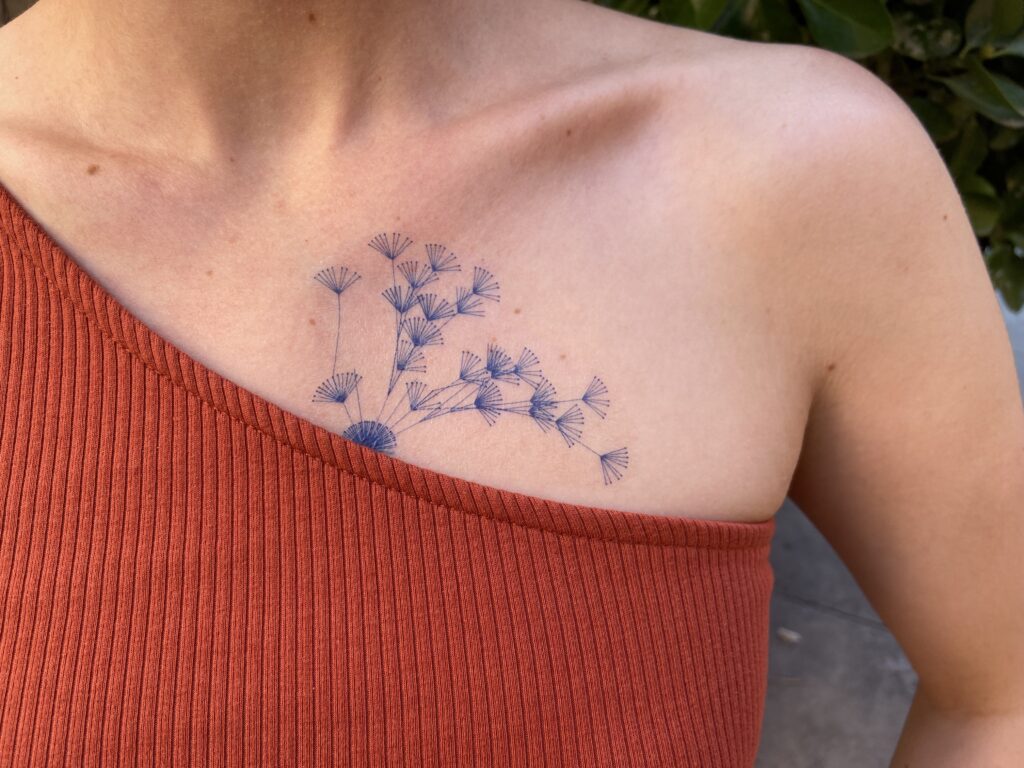
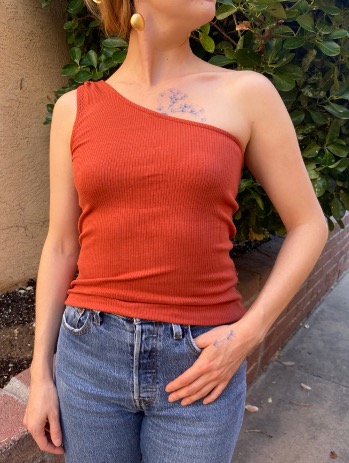
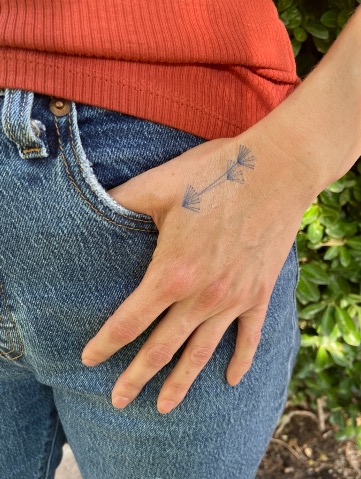
The only fabrication significant fabrication error was not cutting the tattoo closer the lines of the drawing. The picture below shows how the light catches the adhesive parts of the tattoo taking away from the desired effect of a temporary tattoo. Next time I would use a craft knife to get very little excess adhesive.

References and Code Files
- Brack, P. (2020, January 27). Egyptian blue: More than just a colour. Chemistry World. https://www.chemistryworld.com/features/egyptian-blue-more-than-just-a-colour/9001.article
- Evans, E. A. (2019, June 4). Papyrus: A blessing upon pharaoh, occasional paper: McClung Museum of Natural History & Culture Elaine A. Evans. McClung Museum of Natural History & Culture | University of Tennessee, Knoxville. https://mcclungmuseum.utk.edu/2008/09/02/papyrus/
- Kamrin, J. (1AD, January 1). Papyrus in ancient egypt: Essay: The Metropolitan Museum of Art: Heilbrunn timeline of art history. The Met’s Heilbrunn Timeline of Art History. https://www.metmuseum.org/toah/hd/papy/hd_papy.htm
- Terry, J. (n.d.). Papyrus. Art history glossary. https://blog.stephens.edu/arh101glossary/?glossary=papyrus
L-System Exercises
- Exercise Answers
a) 360/2pi
b) (2*360)/(2pi*2), (0.5*360)/(2pi*0.5) - A+B = theta, where theta = 360.
Hi Erin, I liked how you shared some background of the papyrus and ancient Egyptians. The color is also very beautiful and it represents a wonderful symbolic view of fertility. I also liked how you created the buds of the ‘lavender’ plant you chose.
Hey Erin,
Your system for “The Girls” is so striking and I think that comes a lot from how good and natural your flowers and leaves look. The general flow of it is also great, with the idea of using multiple turtles being a genius solution. Great job on this project!
Hi Erin, I really enjoyed your class presentation and I was so very impressed by your Girls plant! You did a wonderful job with both the flowers and the leaves. I so would love to see your code how you implemented the leaves, particularly. I struggled with leaves soooo much.
Great job! Well done!
Hello Erin,
I LOVE what you did here. I was not convinced I could make individual leaf shapes and you completely proved me wrong and in such a beautiful and elegant way. The “Girls” is spot on and I was in Ahhhh when you were presenting. Your details are great. Thank you for sharing such wonderful pieces of work.